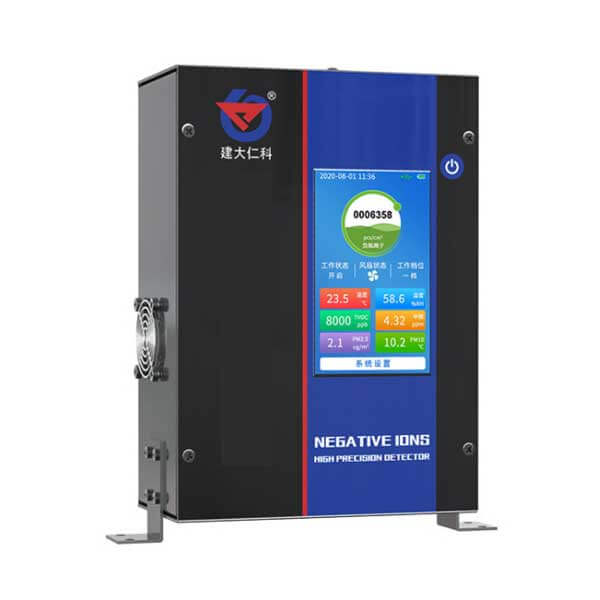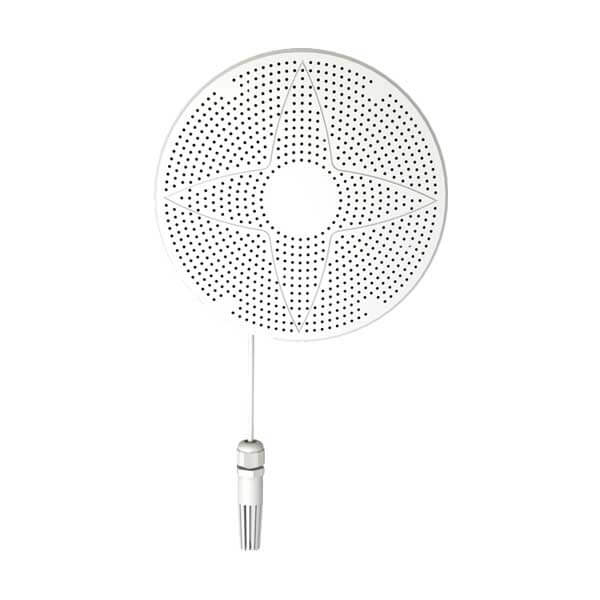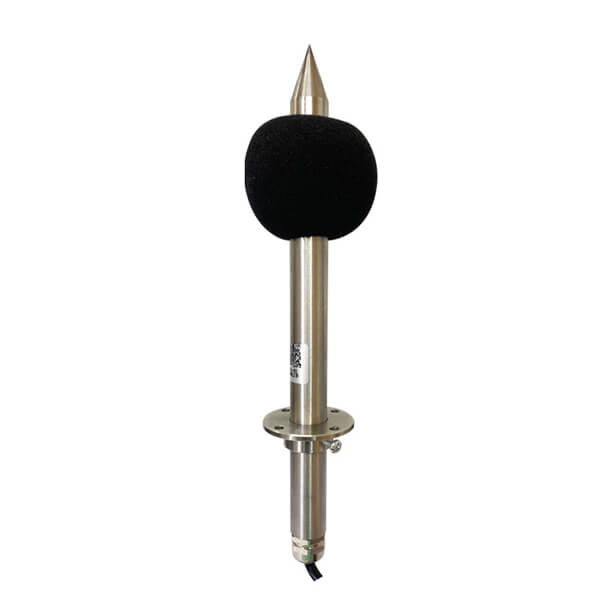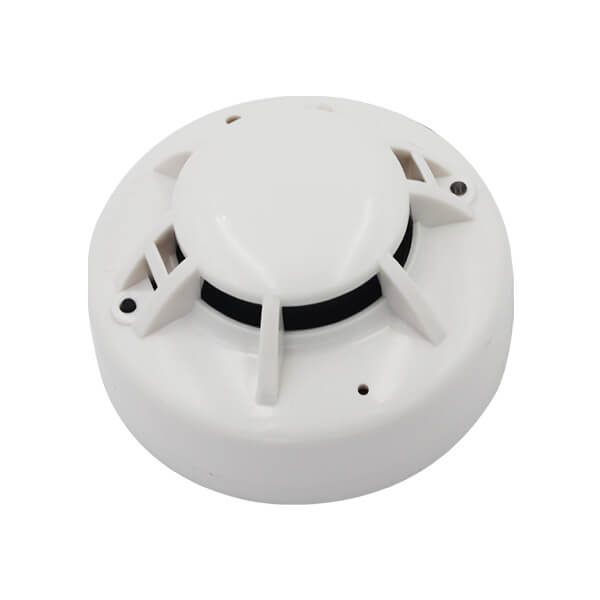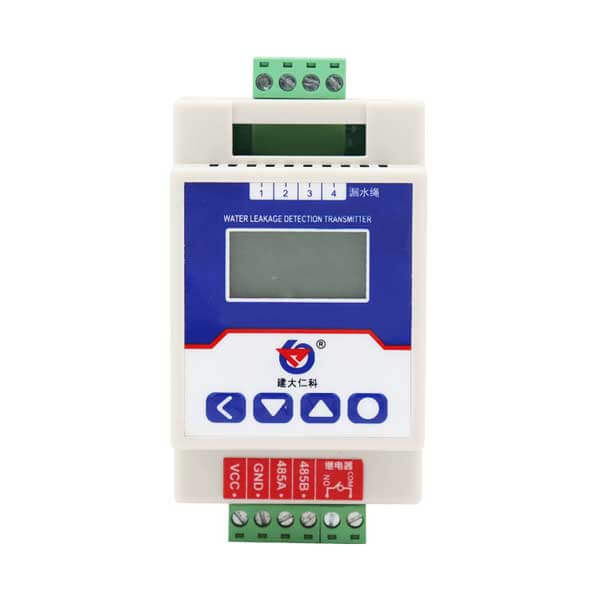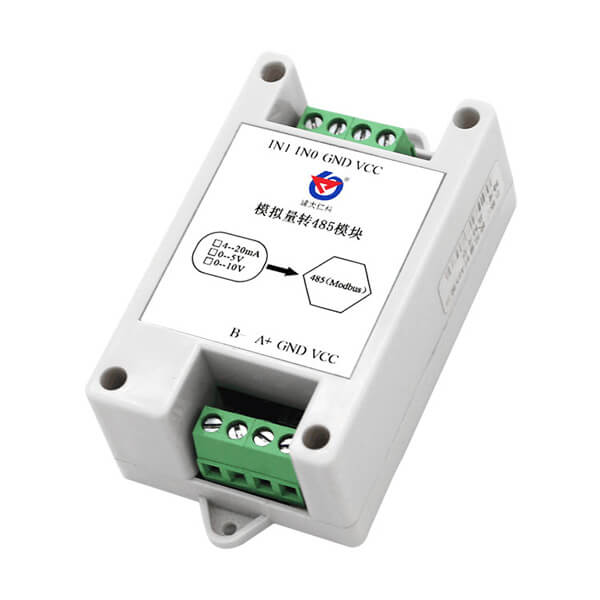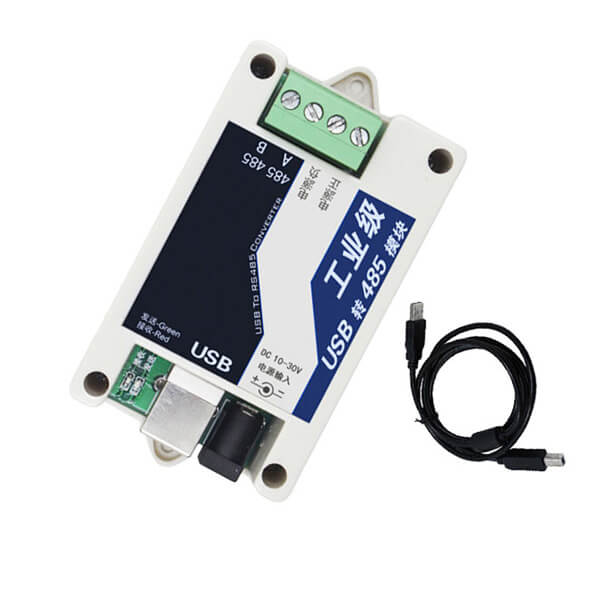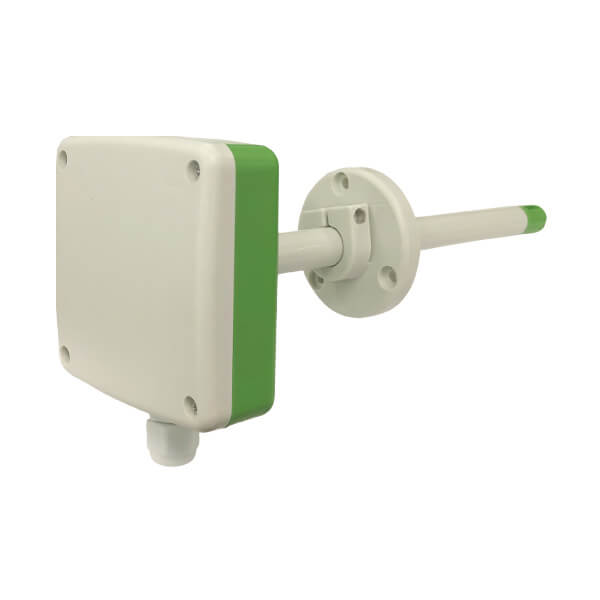The main purpose of environmental monitoring is to provide data on environmental quality and changing trends to ensure the safety of public life and property.
Negative Ion Detector
Negative ion detector with color touch screen, real-time display of negative oxygen ion concentration in the air, optional measurement elements such as temperature and humidity, formaldehyde, PM, TVOC, optional select data storage and U disk export function. The equipment adopts standard MODBUS-RTU communication protocol, RS485 signal output, accurate measurement.
- Model: RS-NEGO-N01-2*-*-EX
- MOQ: 1 PCS
- Delivery date: within 24 hours
- Price: $235~$465
About - Negative Ion Detector
The concentration of negative ions is one of the indicators of air quality. According to the World Health Organization, the standard concentration of negative oxygen ions in fresh outdoor air is 1,000~1,500 ions/cm³, while a healthy concentration indoors for urban residents ranges from 40~100 ions/cm³. The negative oxygen ion detector is used to monitor ion concentrations in sectors such as forestry, environmental protection, meteorology, and tourism, helping to improve air quality in both rural and urban areas. High-sensitivity negative ion detectors feature fast response times and are mainly used to measure the negative ion concentration in materials such as negative ion coatings and fabrics.
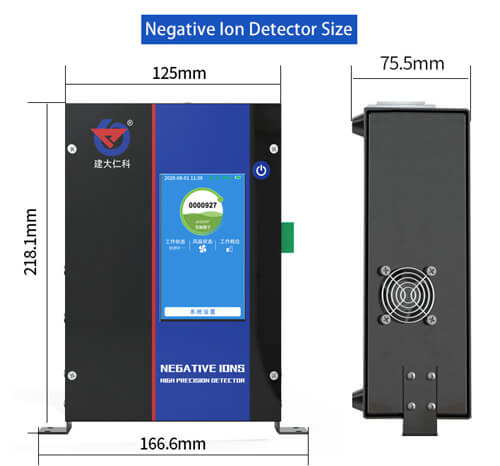
Negative ion detector description
This negative ion detector is powered by a rechargeable battery, featuring a compact design for easy portability, allowing users to measure negative oxygen ion concentrations at different locations. The color touchscreen enables real-time data viewing and allows users to manually set and adjust various parameters. The negative ion detector offers selectable measurement ranges of 0~5 million, 0~50 million, 0~100 million, 0~200 million, and 0~500 million ions/cm³. In addition to detecting negative oxygen ions, it can also be configured to measure temperature, humidity, formaldehyde (HCHO), PM2.5, and TVOC. It is suitable for both indoor monitoring and integration with weather stations.
Renke negative ion detector types
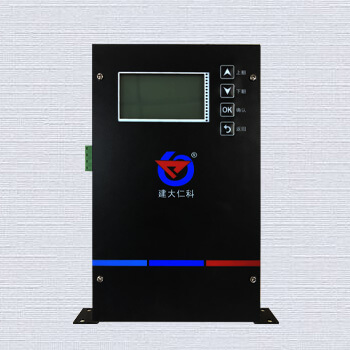
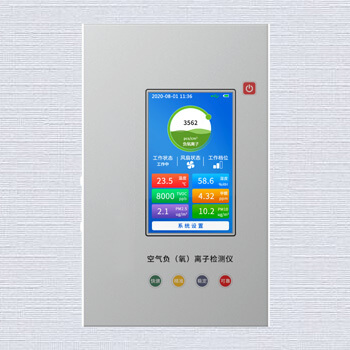
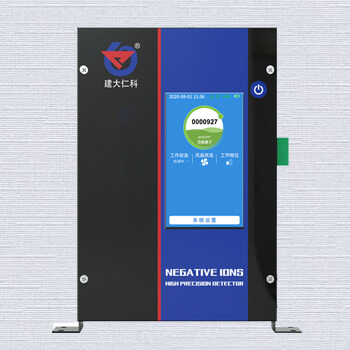
Negative ion detector datasheets
| Power supply | DC18-30V or battery powered | |
| Battery capacity | 4000mAh | |
| Working environment | -20℃~50℃; <95%RH no condensation | |
| Storage capacity | 65535 readings | |
| Charging time | ≤4h | |
| Battery working time | 10h | |
| Negative oxygen ion parameters | Measuring range | 0-5 million ions/cm³ (Optional 50,000/100,000/500,000/50 million) |
| Minimum resolution | 10 ions/cm³ | |
| Measurement error | ±15% | |
| Data update frequency | 1Hz | |
| Ion mobility | 0.4cm²/(V*S) | |
| Ion mobility error | ±5% | |
| Temperature | Measuring range | -40℃~60℃ |
| Accuracy | ±0.5℃(25℃) | |
| Resolution | ≤0.1℃/y | |
| Humidity | Measuring range | 0%RH~100%RH |
| Accuracy | ±3%RH(60%RH,25℃) | |
| Resolution | ≤1%RH/y | |
| PM10/PM2.5 | Measuring range | 0~1000ug/m³ |
| Accuracy | ±3%FS(@100μg/m³,25℃) | |
| Resolution | 1ug/m³ | |
| CH₂O | Measuring range | 0~2ppm |
| Accuracy | ±0.025ppm or ±20%FS | |
| Resolution | 0.001ppm | |
| TVOC | Measuring range | 0~60000ppb |
| Accuracy | 15%FS(@C2H6O,0.5ppm,25℃,50%RH) | |
| Resolution | 1ppb | |
Negative ion detector zero adjustment
When the negative ion detector operates for an extended period, measurement inaccuracies may occur. In such cases, zero calibration is required. First, on the main interface, tap “System Settings”, then select “Negative Oxygen Ion Settings” from the system menu.
In the “Negative Oxygen Ion Settings” interface, tap “Device Zero Calibration”, and enter the zeroing password: 1234321. Next, cover the air inlet with the provided cap. After a 60s countdown on the screen, the device will automatically return to the main interface, with the working status showing “Zeroing…”. Wait until the status changes to “Measuring…”, then remove the air inlet cover — zero calibration is now complete.
U disk export data
First insert the USB flash drive into the USB interface, then click System Settings on the main interface, click Data Export on the system menu interface, and display the format of the USB flash drive as the inserted USB flash drive format (support FAT12, FAT16, FAT32), and display the capacity and availability of the USB flash drive Capacity, then click Plan Export, enter the number of data to be exported, click “Start Export”, wait for the prompt “Export Complete”, unplug the U disk to complete the export. The exported data is in EXCEL format.
Maintenance
1. The collector, air inlet and outlet, fan, etc. should be cleaned once a month.
2. At least three months, a special inspection and cleaning, and maintenance of the collector, circuit, and gas circuit should be carried out.
3. Before the lightning-prone season of each year, the lightning protection grounding, the collector shell, and the outer box grounding should be inspected and maintained.
FAQs - Negative Ion Detector
What are negative ions?
Negative oxygen ions are the free electrons generated by the ionization of molecules in the air under the action of high pressure or strong rays, and most of the free electrons are obtained by oxygen. One type of negatively charged oxygen ions (the electrons are negatively charged) that gain some electrons are called “negative oxygen ions“, and the other is the health killer superoxide radical.
Why do we need to detect negative oxygen ions?
The negative oxygen ions in the air have a good effect on the environment and the maintenance of human health. In medicine, negative oxygen ions are known as “vitamins in the air” and “longevity factor”. They can effectively decompose and reduce harmful gases in the air, making people feel refreshed and refreshed, enhancing skin elasticity, relieving aging, preventing health. They can improve respiratory diseases and cardiovascular and cerebrovascular diseases, lower blood pressure, increase appetite, and regulate the body’s physiological functions.
Where is the application of negative ion detector?
- Environmental Monitoring
Used for real-time assessment of air quality in eco-tourism areas, forest parks, and similar regions by providing negative oxygen ion concentration data to support air freshness certification. - Indoor Air Quality Assessment
Capable of simultaneously detecting pollutants such as formaldehyde and PM2.5, making it suitable for home renovation acceptance inspections and air purifier performance testing. - Industrial Product Development
Helps manufacturers quantify the efficiency of negative ion release, optimize air purification technologies, and support marketing efforts for products like nano coatings and health-related items. - Agricultural and Storage Management
Equipped with temperature and humidity monitoring functions, suitable for greenhouse environmental control and storage condition monitoring.
What is advantages of Renke negative ion detector?
- Color display screen with an elegant and modern appearance.
- Equipped with a high-precision negative oxygen ion measurement unit, ensuring long-term stability and minimal drift.
- Built-in dedicated RS485 circuit with standard ModBus-RTU communication protocol; both communication address and baud rate are configurable.
- Integrated battery with optional external power supply via a wide DC voltage range of 18–30V.
- Optional data storage function with USB export capability.
- Optional sensors include formaldehyde (HCHO), PM2.5/PM10, temperature and humidity, and TVOC.
- Touchscreen settings for user-friendly and efficient operation.
What is the unit of concentration of negative ions?
Air negative ion concentration refers to the number of negative ions per unit volume of air, and its unit is ions/cm³.
What is the working principle of the negative ion detector?
The overall structure of the negative ion detector is composed of 3 concentric cylinders. The outer cylinder body and the inner shaft are electrodes. When air passes through the cylinder, the ions hit the cylinder body and the shaft to generate discharge, and the discharge signal is recorded, so that it can be positive in the air. , The number and size of negative ions are measured.
How to select the working mode after turning on the negative ion detector?
- After powering on the negative oxygen ion detector, select the working mode. There are three options: low range, high range, and automatic range switching.
- For example, for a device with a 0~5 million range, the low range mode can measure negative oxygen ion concentrations within 0~300,000 ions/cm³. The high range mode can measure concentrations within 0~5 million ions/cm³. However, within the 0~300,000 range, the accuracy is lower, and there is no intermediate range.
- In automatic range switching mode, the measurement range is 0~5 million with high accuracy, but when the value exceeds 300,000 ions/cm³, there will be a one-minute delay for range switching.
- Note: When selecting different range modes for measurement, zero calibration is required.
How to install the negative ion detector?
- Can be fixed using screws; the mounting hole diameter is 4.5mm. It is important to ensure the negative oxygen ion detector is placed vertically, with the air inlet and outlet unobstructed to avoid affecting data accuracy.
- Installation must be stable, with the detector center positioned at a height of 1.5 meters from the ground.
- The collector’s housing and outer enclosure should have proper grounding.
- Equipped with lightning protection facilities; grounding resistance should be less than 4Ω.
- Optional protective fencing can be installed; fence height should not exceed 1.2 meters, and the distance between the instrument and the fence should be greater than 2.0 meters.
How to obtain the manual of the negative ion detector?
You can contact us to get the manual by leaving a message or email.
Related Blogs
What is a karst cave? The karst cave is a treasure given to mankind by nature and is called a “disposable non-renewable resource” by experts.
The weather sensors are the sensing end of the weather station and collect various weather-related data. The weather station can obtain the main parameters and
Table of Contents Smart buildings are the product of the development of modern science. The smart building system is mainly composed of Internet of Things
Table of Contents What is IoT? IoT is the “Internet of things“. It is an extended and expanded network based on the Internet. It combines
What is an air quality monitor? An instrument used to detect air quality can be called an air quality monitor. However, due to the extensive
A complete set of a weather station is composed of two parts: hardware and software. The hardware part includes various weather station sensors, connecting lines,
Table of Contents Do you know where to mount weather station? The weather station should be installed as far as possible on the open ground
Compared with the traditional electric plate type air negative ion detector, Renke negative oxygen ion detector designed with the principle of double concentric cylinders can
Negative ions are essential for both environmental protection and health. Firstly, from an environmental perspective, the concentration of negative oxygen ions in the air is

